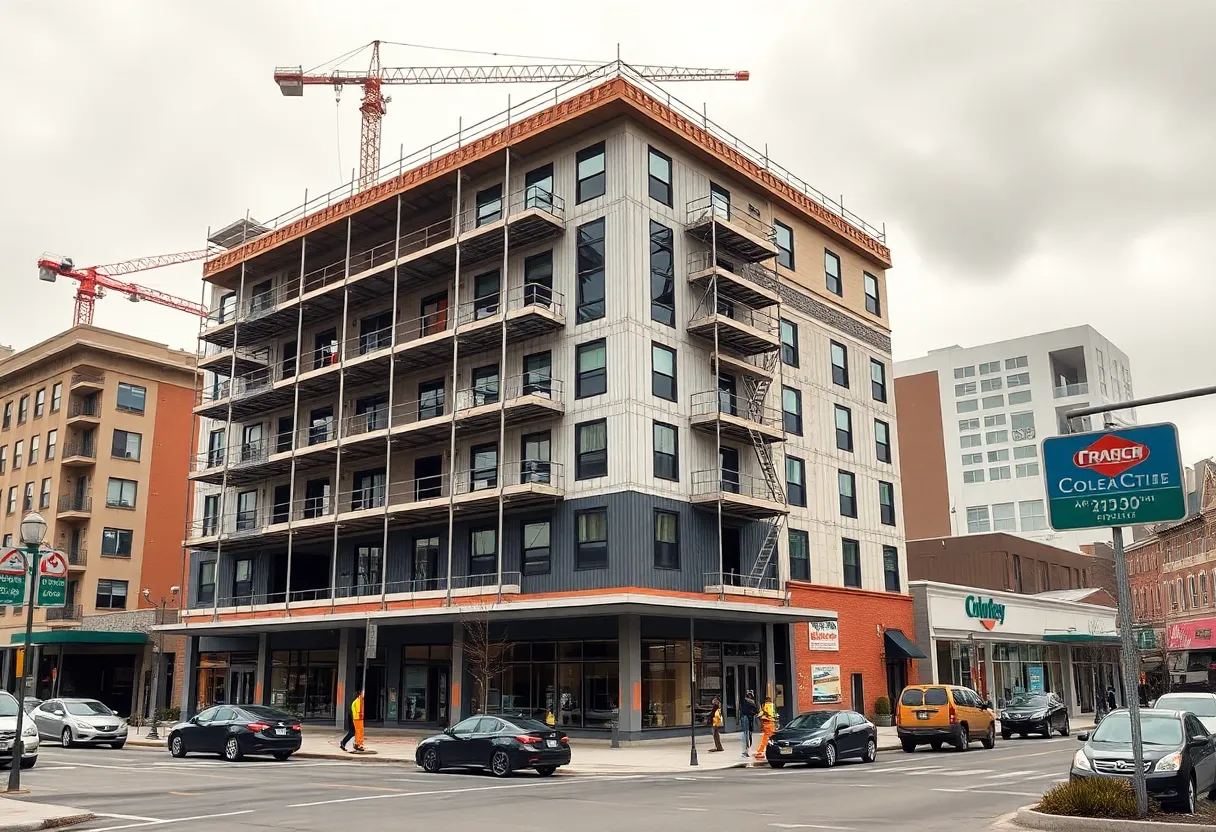Global, September 7, 2025
News Summary
The global architectural services market is valued at approximately USD 184.1 billion and is forecast to reach roughly USD 330.1 billion, implying a 7.57% compound annual growth rate over the forecast period. Growth is driven by urbanization, broad infrastructure programs and rising demand for sustainable, net‑zero design. The sector is shifting to digital workflows—BIM, AI-driven generative design, digital twins, VR/AR, 3D printing and modular construction—while regulations and carbon targets push low‑carbon materials and lifecycle thinking. Firms combining sustainability expertise, data-driven design and new delivery models are best positioned to capture expanding public- and private-sector demand.
Architectural Services Market at a Glance
The market for architectural services was valued at USD 184.1 billion in 2025, with forecasts pointing to a rise to USD 330.1 billion by 2033. Analysts expect a compound annual growth rate (CAGR) of approximately 7.57% over the 2025–2033 period. This inverted-pyramid snapshot places size and growth at the forefront, followed by the factors shaping how the sector evolves in the coming years.
What is driving the expansion?
Several long-running forces are propelling demand for architectural services. Rapid urbanization and ongoing infrastructure development create a steady need for planning, design, and project management. Sustainability has risen to the top of priorities, with green architecture and net-zero energy designs becoming more common across both commercial and residential builds. The push toward more intelligent, efficient cities also underpins growth, as planners and developers seek integrated design solutions that accommodate evolving populations and changing energy standards.
Technology and design: the major accelerators
The report highlights a widening integration of digital tools that are transforming planning and execution. Among these tools are Building Information Modeling (BIM), artificial intelligence (AI), and 3D visualization, all of which enhance space utilization, energy performance, and client visualization. In 2024, AI-driven design algorithms were used to optimize layouts and energy efficiency, while virtual reality (VR) and augmented reality (AR) became standard for client presentations and project visualization. Digital twins emerged as a practical method for real-time modeling of building performance, helping operators improve efficiency post-construction.
Emerging trends forecast for 2025 and beyond
Looking ahead, AI-powered generative design is expected to automatically generate optimal building layouts by balancing user requirements with environmental factors. 3D printing is anticipated to reduce material waste and construction costs for models and components. The concept of smart architecture—incorporating IoT sensors to adapt to occupancy and weather—gains traction, enabling buildings to respond to changing conditions in real time. Blockchain-based contracts are seen as a way to boost transparency and efficiency in project management.
Markets and segments to watch
The market is segmented by service type, end user, and geography. Service types span Architectural Advisory Services, Construction and Project Management Services, Engineering Services, Interior Design Services, Urban Planning Services, and Other Service Types. End-user categories include commercial, residential, and institutional sectors, among others. While the detailed geography mix varies, growth is broad-based across developed and developing regions as urban centers expand and renovation activity remains strong.
Notable case studies and ongoing projects
Within a broader landscape of architectural work, several high-profile renovations and design programs illustrate the sector’s practical directions. In one major national project, a six-year refurbishment revived daylight and accessibility in a historic museum by reintroducing wall space for art and reopening previously bricked-over windows. The project combined preserved historic fabric with modern M&E upgrades, new glazing strategies, and a restrained yet expressive use of daylight to illuminate artworks. Key design moves included the retention of original material such as white-glazed brick while introducing a new glass ceiling to bounce daylight into adjacent galleries. Accessibility improvements included multiple elevator positions and a carefully sequenced circulation system. The work involved a broad team of specialists, from conservation architects to M&E engineers, with a focus on maintaining the building’s Victorian and Edwardian character while delivering 21st-century gallery standards. The refurbishment also called for a careful balance between historical preservation and contemporary display needs, ensuring that masterpieces could be viewed under optimal lighting conditions.
Practice and leadership trends in the sector
Industry leadership continues to expand and evolve as firms scale up through new boards, senior roles, and cross-disciplinary teams. In some markets, large architectural practices are increasing their design leadership capabilities and diversifying skills to accommodate complex programs, including data centres, urban planning, and large-scale institutional work. The shift toward AI-enabled design, integrated project delivery, and digital fabrication reflects a broader move toward more collaborative, data-driven workflows across architecture, engineering, and construction (AEC).
Key takeaways
Market momentum is sustained by urban growth, infrastructure needs, and sustainability demands. Digital tools are redefining planning and construction, with BIM, AI, VR/AR, and digital twins taking a central role. Future trends point to AI-driven generative design, 3D printing, and IoT-enabled smart buildings, along with blockchain-enabled project management.
Frequently Asked Questions
What is the projected size of the Architectural Services market by 2033?
The market is projected to reach about USD 330.1 billion by 2033, reflecting a forecasted growth trend driven by urbanization, infrastructure development, and sustainability initiatives.
What are the main growth drivers?
Growth drivers include increasing urban populations, ongoing infrastructure development, demand for sustainable design, and the adoption of advanced digital tools that improve planning, visualization, and project delivery.
Which technologies are transforming architectural practice?
Key technologies include Building Information Modeling (BIM), AI-driven design, 3D visualization, VR/AR for client engagement, digital twins for real-time operations, and IoT-enabled smart building systems, along with new approaches to materials and fabrication.
What notable 2024 trends affected the market?
In 2024, there was a surge in smart city planning and modular construction, broader use of AI to optimize space and energy use, and the standardization of VR/AR for client presentations, with regulatory emphasis on carbon and environmental assessments shaping material choices and design strategies.
How is sustainability influencing architecture?
Sustainability is a top priority, driving demand for green building designs, energy efficiency, and practices that minimize environmental impact across commercial and residential sectors.
Key features at a glance
| Feature | Details |
|---|---|
| Market size (2025) | USD 184.1 billion |
| Forecasted size (2033) | USD 330.1 billion |
| CAGR (2025–2033) | Approximately 7.57% |
| Key growth drivers | Urbanization, infrastructure development, sustainability demand |
| Technologies transforming practice | BIM, AI, 3D visualization, VR/AR, digital twins, IoT |
| Emerging trends | AI-powered generative design, 3D printing, smart buildings, blockchain-based contracts |
| Notable case study focus | Integrated refurbishment projects that balance historic preservation with modern standards |
Deeper Dive: News & Info About This Topic
Additional Resources
- GlobeNewswire: Architectural Services Market Trends (Sept 5, 2025)
- Wikipedia: Architecture
- Irish Examiner: Property — Commercial
- Google Search: Dublin architecture
- GlobeNewswire: Architectural Services Business Report (Dec 3, 2024)
- Google Scholar: architectural services market 2030
- AWS Public Sector Blog: AWS Health Data & AI Day Dublin 2025
- Encyclopedia Britannica: European Health Data Space
- Architectural Record: National Gallery of Ireland — Heneghan Peng
- Google News: National Gallery of Ireland Heneghan Peng





